Impact Test on airbag jackets (JARI 2011)
Testing Institution
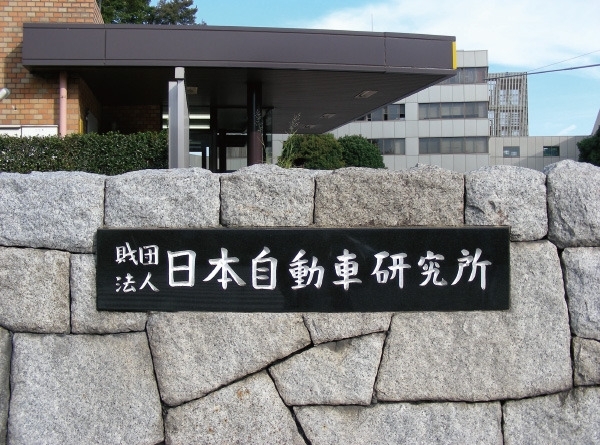
Japan Automobile Research Institute (JARI)
World-famous JARI was established in April 1969 to engage in general research on automobiles. They do test-research, consultation, joint study etc. related to automobiles and have been expanding into a wider field of industrial activity.
Outline of the Test
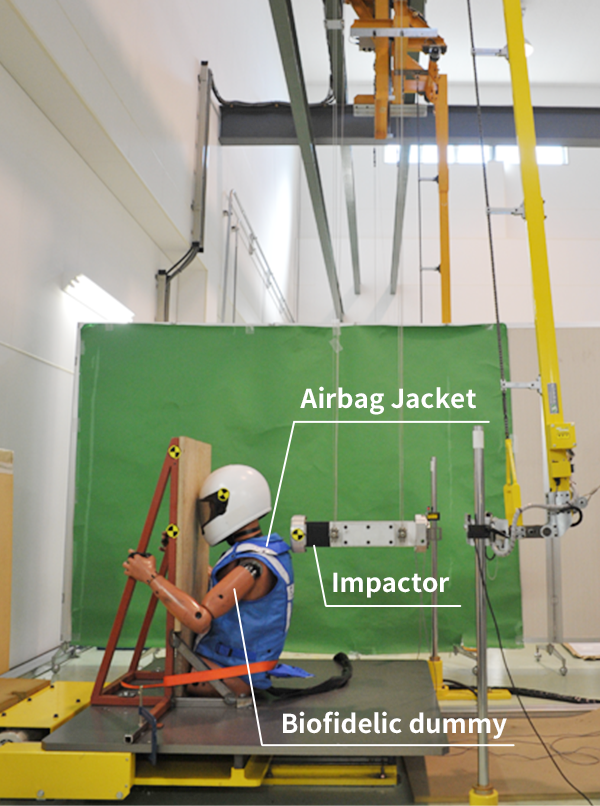
This study was conducted to evaluate the performances of airbag jackets developed for the crash protection of motorcycle riders. The items of evaluation were: the rider protection performance against impact for the airbag jacket to fully inflate. A biofidelic dummy capable of measuring impacts on the human body was employed. Impacts were applied by a 23kg-mass impactor to the dummy fitted with an airbag jacket, and the impacts on the neck and chest of the dummy were measured in order to evaluate the rider protection performances of various airbag jackets.
Impact Test on Airbag Jackets
In the neck impact test the target impact speed was set at 5.6 m/s (20 km/h). The dummy was set in the targeted impact position so that the upper end of the impactor's impact face would come as close as possible to but not in contact with the rear lower end of the helmet, while the vertical centerline of the impactor would overlap with that of the dummy. The airbag jacket was manually inflated before each test round.
Neck Impact Test
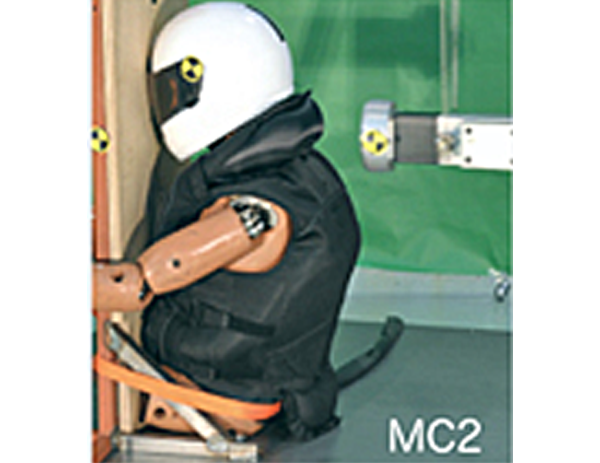
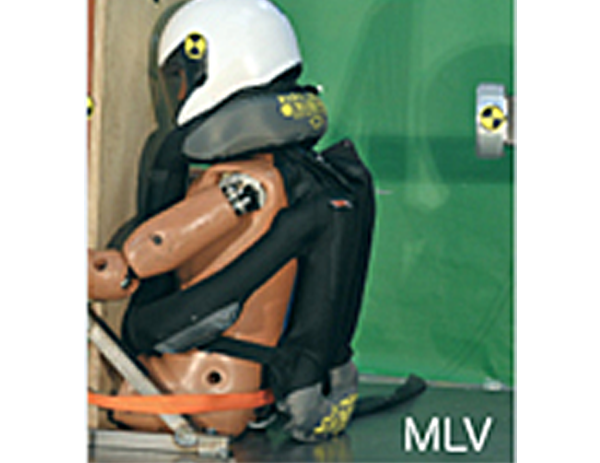
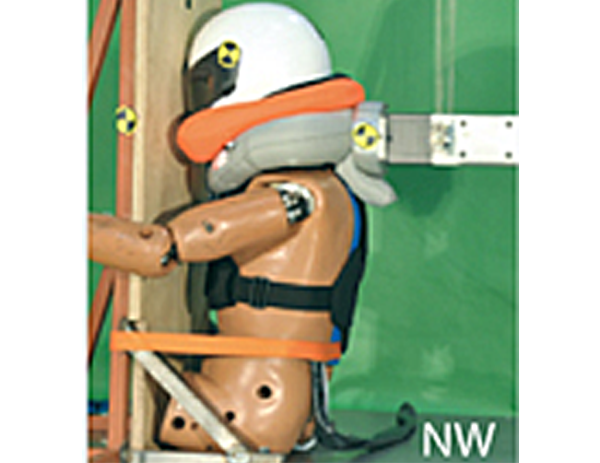
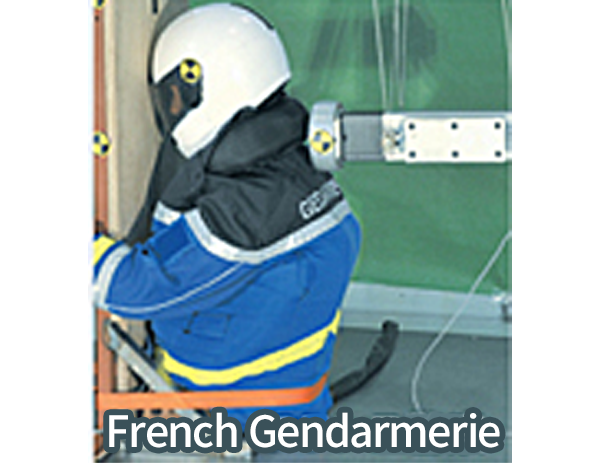
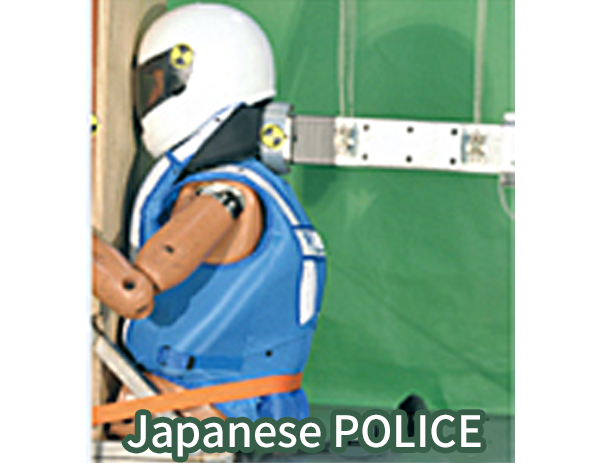
Table 1 Results of neck impact test
| Airbag jacket model |
Impact speed (m/s) |
Neck shear (N) |
Neck tension force (N) |
Neck flexion bending moment (Nm) |
|---|---|---|---|---|
| POLICE | 5.6 | -1490 | 1758 | 87 |
| FRANCE | 5.6 | -961 | 2200 | 49 |
| NW | 5.6 | -1034 | 1582 | 58 |
| Race Model |
5.6 | -1064 | 2474 | 59 |
| MC2 | 5.6 | -1243 | 2234 | 72 |
| MLV | 5.6 | -935 | 3041 | 59 |
Table 1 shows the results of the neck impact test. The test results were evaluated according to the injury criteria provided in the US FMVSS 208 on occupant crash protection.
The criteria adopted in the neck impact test were: fore-and-aft shear 3,100 N, vertical tension force 4,170 N, and forward flexion bending moment 190 Nm. It was found that except for the 4,330 N tension force recorded in N-10 test round, all the test results clearly satisfied the neck injury criteria.
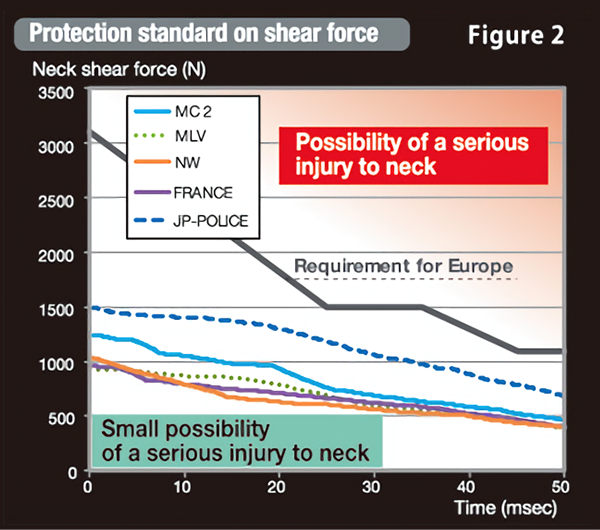
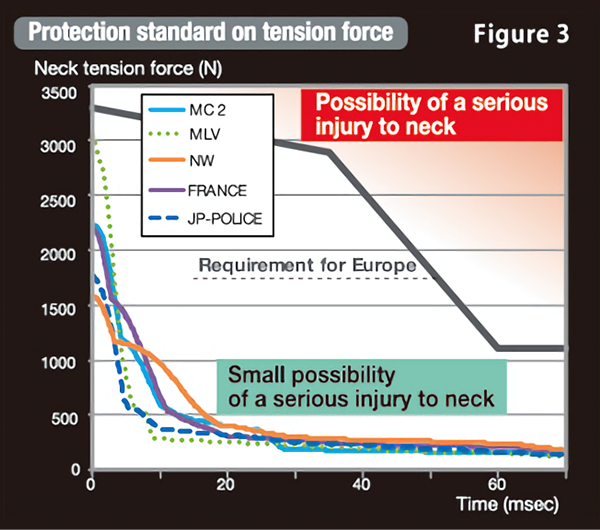
While injury criteria provided in various regulations are judged in relation to maximum values, there are proposals to adopt the duration of a generated force as an additional criterion whereby the values of a generated force are judged in relation to the duration of the same force.Figure 2 shows the protection standard values of neck shear; similarly, Figure 3 shows the protection standard values of neck tension force. In both of the graphs, the measurement results are plotted in relation to the duration of neck shear or neck tension force. It was found that the measured shear and tension force values in all but SKV test rounds fell in the "small possibility of serious injury" zone. Therefore, it can be deduced that if a rider is to receive an impact equivalent with the impacts applied in this study (by a 23 kg mass at a 20 km/h impact speed), the rider will be able to reduce the severity of neck injury to less than serious injury by wearing an airbag jacket.
